This is a free fortnightly newsletter about the New Zealand Net.
If you would like to be notified by email when a new edition is published, please subscribe here.
Browse our Newsletter Archive and List of Net Tips.
Featured key
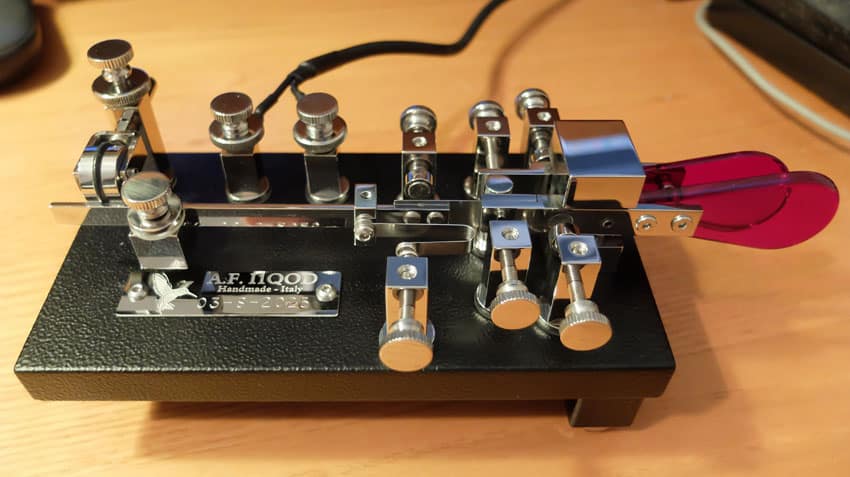
Photo: IK4EWX
By Gian Luca “Ian” Cazzola IK4EWX
Another great bug by Alberto Frattini I1QOD arrived at my house.
The Frattini Prestige – Special Version is all mirror-polished stainless steel, except for the multi-layered black painted base.
It’s a dual lever bug, with independent paddles.
It has magnetic returns, with no springs on the pendulum or on the dash lever. The pivot rests on ball bearings.
The registers are adjustable even while transmitting – without locknuts, for more precise and fine adjustments. How do they keep their adjustment? Within each register’s turret is a teflon ball which puts pressure on the register screw to prevent unwanted movement. At the top of the turrets you can see a screw that adjusts the pressure on the teflon ball.
The Prestige bug has add-on feet (removable) that allow you to have the paddles at 2.5 inches (63mm) above the table, as advocated by Ted McElroy – a height that permits a free wrist for better manipulation.
The Prestige S has a precise and fluid manipulation like never before. And it is incredibly beautiful.
If the Begali Intrepid is the perfect bug, the Frattini Prestige Special is a high-speed telegraph machine, from 20 up to 45 wpm. The first is as a Rolls Royce, the second as a Lamborghini.
It is a double lever, and requires a bit different manipulation technique on some letters, to avoid “squeezing” the two paddles.
I believe that Alberto Frattini, with Piero Begali, today represents the pinnacle of telegraph keys worldwide, with keys a lot better than those of the Morse “golden age.”
* If you have an interesting key for this feature, please send a nice clear photo and a few words describing it. We currently have quite a few interesting keys in the queue, so please be patient if your key isn’t featured right away.
Quick notes
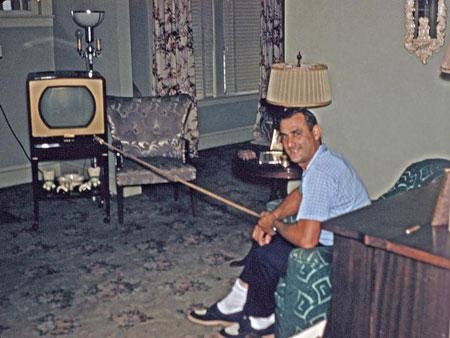 The NZ Net returned “home” to 3535 kHz on 6 April and will stay there for the duration of the southern hemisphere winter. It was fun being on (or near) 7030 kHz for the summer, and we enjoyed good signals from all our net participants, but we did have to be nimble to find a clear frequency some times. Now, let’s make some noise on 80 metres (somebody has to). 🙂
The NZ Net returned “home” to 3535 kHz on 6 April and will stay there for the duration of the southern hemisphere winter. It was fun being on (or near) 7030 kHz for the summer, and we enjoyed good signals from all our net participants, but we did have to be nimble to find a clear frequency some times. Now, let’s make some noise on 80 metres (somebody has to). 🙂
Sod’s Law proven again. Mid-afternoon on Sunday 6 April – the day we were switching the net to 80 metres – I took a walk around the property to check on my aerials, following a couple of days of high winds. The 80-metre inverted vee, with its apex high in an oak tree was alarmingly slack. Sure enough, one leg of the vee had snapped, half way up into the tree, which made repair impossible. I reckon the branch supporting the feed point moves a couple of metres in high winds, and I guess I was guilty of not leaving quite enough slack in the wires. The rest of the day was spent getting another aerial aloft and its feeders connected to the shack. All done in time for the net.
April is always a busy month in the world of Morse code. Take your pick from these events:
Maritime Radio Day is 14-15 April.
World Amateur Radio Day is 18 April.
International Marconi Day is 26 April.
Morse Code Day is 27 April.
US amateurs oppose deregulation. The Federal Communications Commission, under orders form President Trump, is looking for ways to reduce regulations, and it’s not subtle: the FCC’s public consultation document is titled: In Re: Delete, Delete, Delete. Some radio amateurs fear the FCC might deregulate the hobby, in ways that could include eliminating the licence requirement, as it did with CB radio in 1983. Radioworld reports that most of the nearly 300 people responding have asked that compulsory licensing be retained in its current form. Consultation closes 11 April.
Picture: Early remote control systems required users with steady hands and good eyes.
Photo flashback
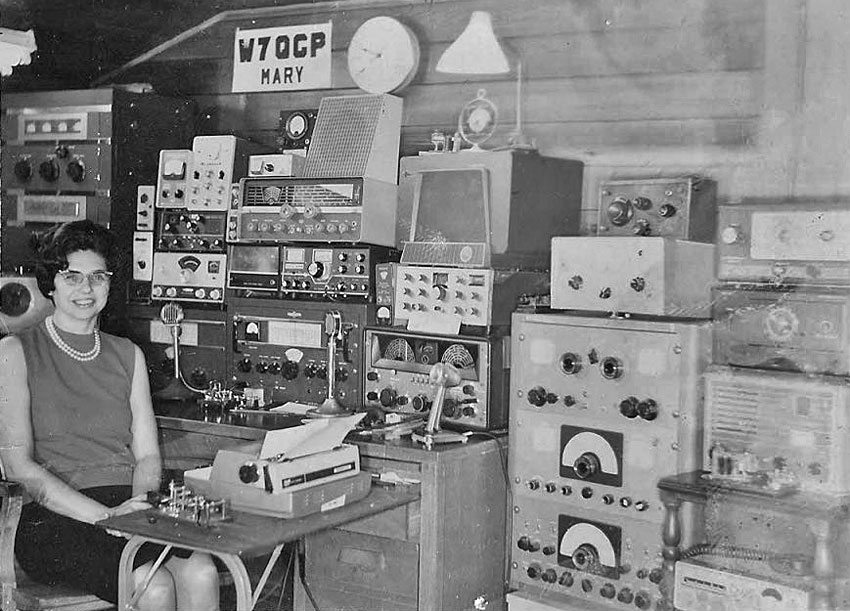
Mary W7QGP ready to take traffic. Her station features a 32V-3 transmitter and an SX-88 receiver. The key looks like a Lightning bug.
NZ Net numbers
In March 2025 we welcomed 285 check-ins, the highest of any month in the six-year history of NZ Net. We also had some interesting DX check-ins and heard from Aaron ZL1AUN (in Pipiwai, Northland) for the first time.

NR10 R ZL1NZ 51/48 AUCKLAND 0800Z 1APR25 = NZ NET = MARCH QNI KA5HRF 1 VE6ROH 1 VK2KJJ 1 VK3DRQ 27 VK4PN 19 ZL1AJY 5 ZL1ANY 30 ZL1AUN 3 ZL1AYN 13 ZL1BDS 15 ZL1NZ 29 ZL1PX 18 ZL2GD 17 ZL2KE 18 ZL2LN 7 ZL2TE 13 ZL3TK 12 ZL4AA 2 ZL4GW 17 ZL4KX 23 ZL4LDY 14 TOTAL 285 QTC 59 = ZL1NZ
Mugshot
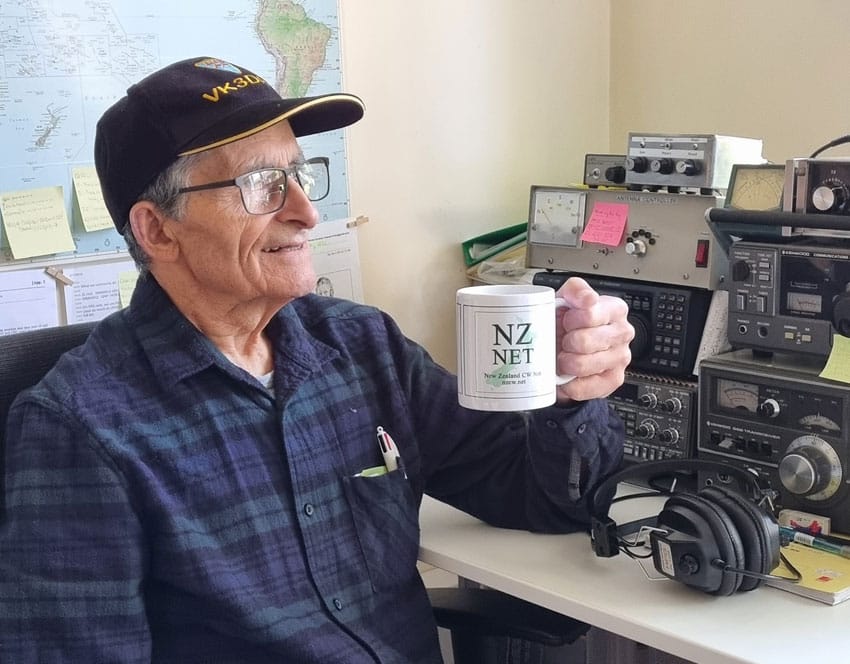
Manny VK3DRQ with his new NZ Net mug
News headlines in CW
Mark ZL3AB commented to me recently:
“I discovered a Morse daily news podcast. It’s called (not surprisingly) News headlines in Morse code. There are versions from 15wpm to 35wpm. They run for about three minutes so good for listening to on the way to work. A search of your podcast software should find it.”
Perhaps you’re familiar with this – or other similar podcasts. Searching online, I found quite a large number of free services giving news headlines. Some were podcasts, such as Mark described, while others were websites. One site that I thought was quite good is morsecode.world which allows you to tailor the CW in several ways. You only get one headline at a time, however, and once you have copied that you can play the next one.
Do you use a Morse headline service? If so, please tell us which ones you prefer, and why.
Anzac Day straight key event
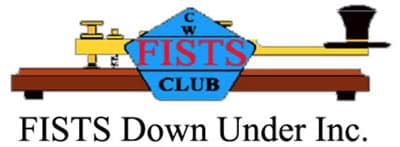 Fists Down Under will hold a Straight Key Day on Anzac Day (25 April).
Fists Down Under will hold a Straight Key Day on Anzac Day (25 April).
- When: ANZAC Day Friday 25 April 2025
- Times: 0001 Local – 2359 Local
- Bands: 160-10m including WARC bands
Make five (5) or more CW QSOs using a straight key to qualify for a Straight Key Day certificate.
Please email your log to Graeme VK5GG.
Remember, being ANZAC Day the AX prefix can be used by VK operators.
Net tip: QNG
We continue our look at Q signals with one that you may hear used by the Net Control Station: QNG.
It means: “Take over as Net Control” for the rest of the net.
Typical reasons for this:
- NCS has high noise or interference
- NCS has a technical failure and needs to shut down
- NCS has to attend to another urgent matter
On NZ Net (and VKCW Net) we have a variation of this, QNG1, when Net Control asks another station to assume net control duties temporarily, i.e. to call for check-ins until they get no further responses. We do this to pick up stations that don’t have good propagation.
But if NCS asks you to QNG (without a numerical suffix) then you are now Net Control for the rest of the net.
Unless, of course, you QNG to someone else. 🙂
The A-Z of Q Signals
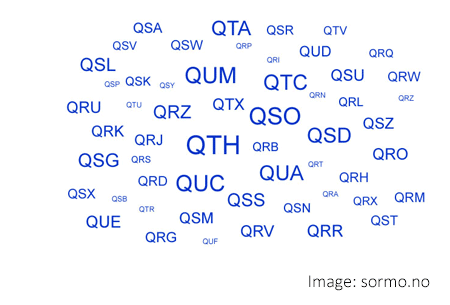
A well-run CW net is a lovely thing to experience. Communication between stations is quick and concise, and the net business is conducted with minimal time wasted.
As CW operators, we have many techniques to communicate quickly and efficiently. And if we know and use these techniques, we can often match or exceed the speed and accuracy of voice communication.
One of our most important tools is the set of Q Signals (or Q Codes), and in this series we look at the “essential” ones, in alphabetical order.
Advertising archive
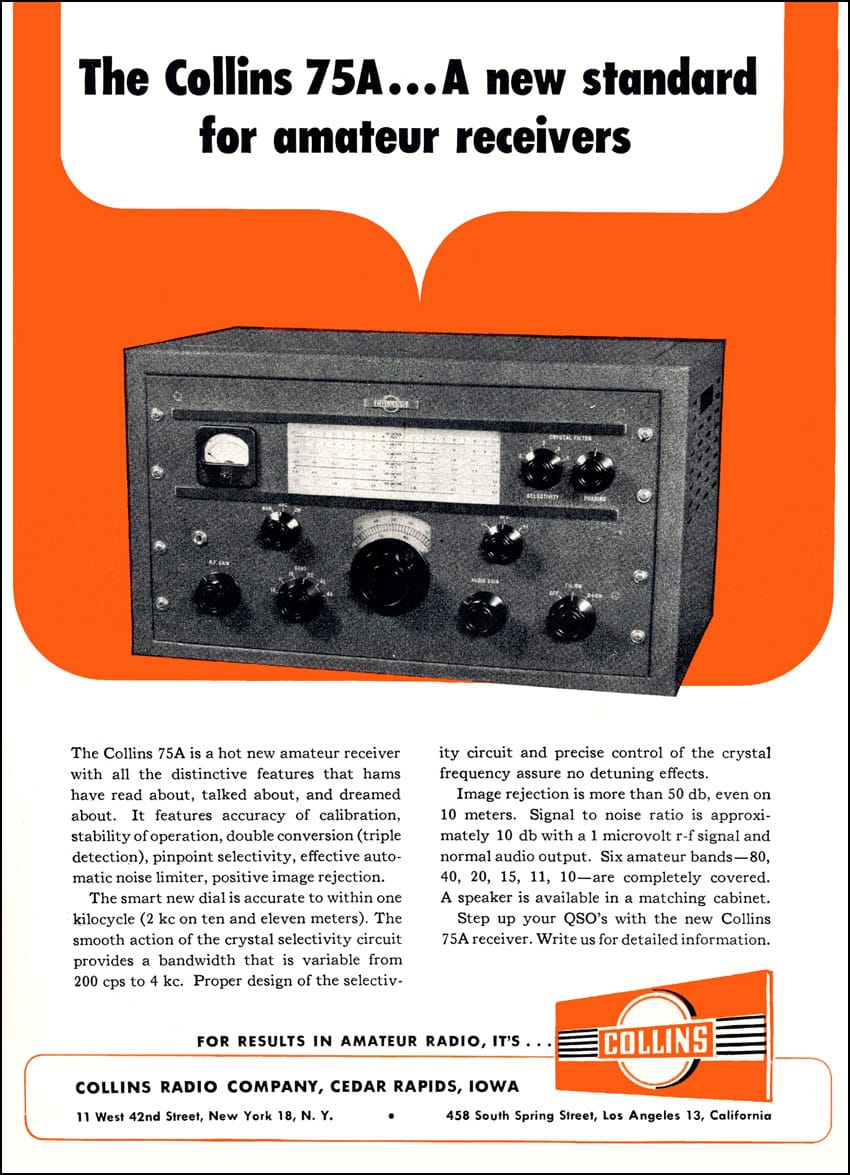
Radio News, October 1946
Suggestions?
If you have suggestions on how to make the NZ Net better, or things you’d like to see covered in these updates, please contact ZL1NZ. You might even like to write something for the newsletter.
Thanks for reading, and I hope to hear you soon on the NZ Net!
—
Neil Sanderson ZL1NZ, Net Manager
New Zealand Net (NZ NET)


